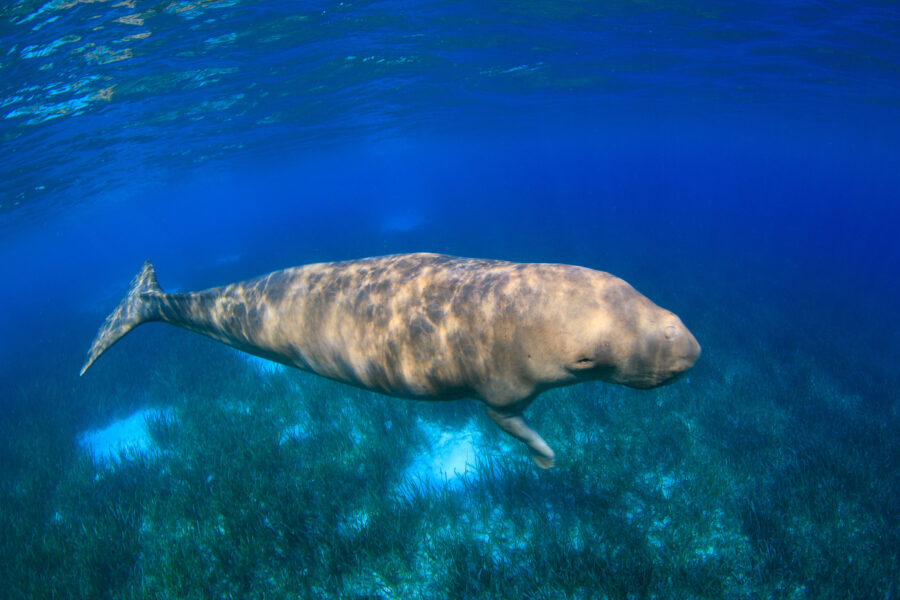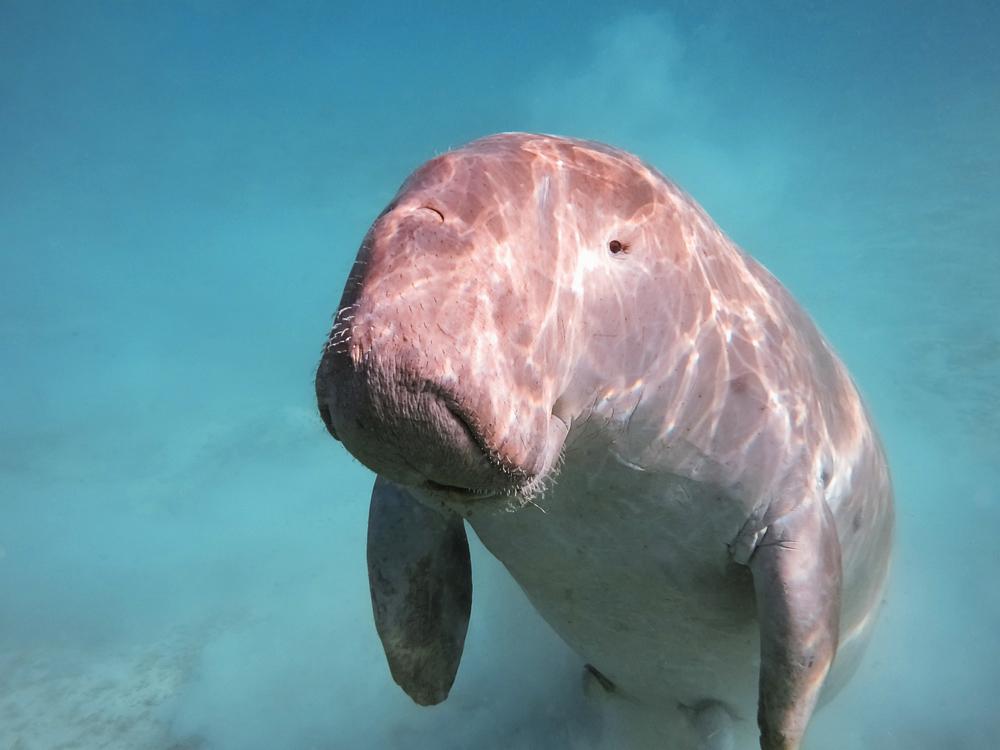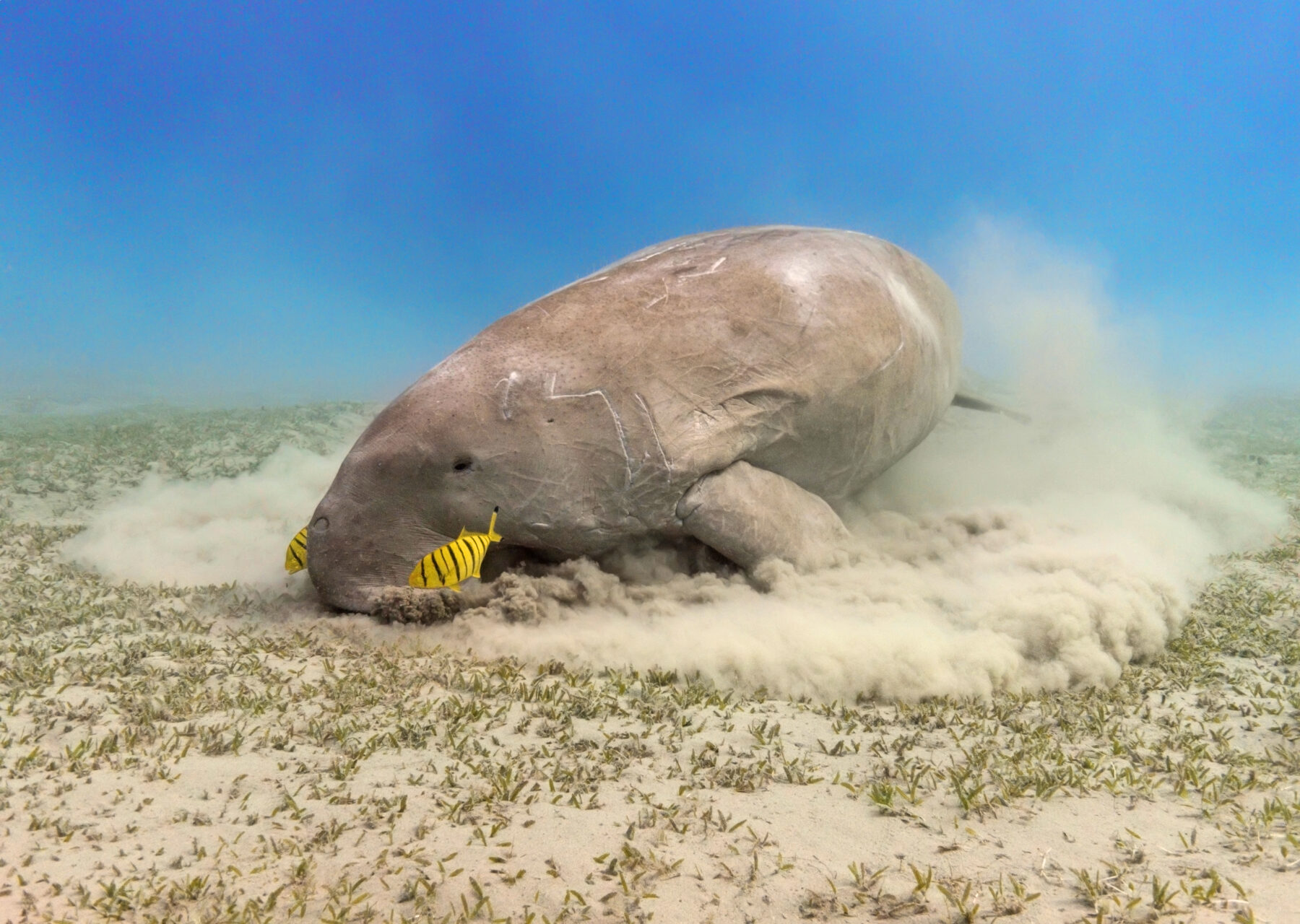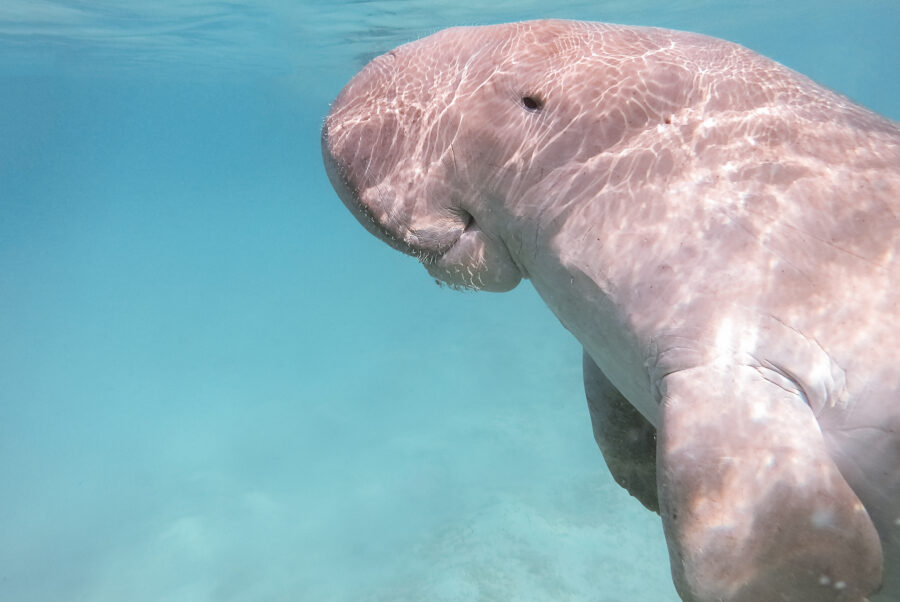Surveys confirm long-term decline of Reef’s dugongs

James Cook University researchers have carried out aerial surveys for the vulnerable species about every five years since the 1980s.
Latest data, from flights in November, confirms a clear, long-term decline in the population along about 1200km of coastline, from Mission Beach south to Bundaberg.
Annual losses of the grass-grazing cow of the sea have been estimated at 2.3 per cent a year, since 2005.
It’s more bad news for the federal government, which is still working to keep the Reef off the list of World Heritage sites in danger.
The Reef is home to one of the world’s largest populations of dugongs and its seagrass feeding grounds are listed as one of the region’s World Heritage values.
“We observed a decline in overall dugong numbers, with the area of most concern being the southern section of the Great Barrier Reef from the Whitsundays to Bundaberg,” says Chris Cleguer, lead dugong researcher at the university’s Centre for Tropical Water and Aquatic Ecosystem Research.
“Alarmingly, we observed very few calves in this region and only two mother-calf pairs spotted in the Gladstone area. Our report reinforces the urgency in addressing threats to dugongs.”

The 2022 survey work suggested the strongest population decline was at Hervey Bay, estimated at 5.7 per cent per year since 2005.
But Dr Cleguer warns that estimate may have been skewed by severe flooding last year that wiped out most of the seagrass in the area.
“It’s highly likely that some dugongs would have died from starvation, while others would have moved away to habitats near Gladstone in search of food,” he says.
“We found the dugongs that did stay found refuge right in the heart of Hervey Bay, where pockets of deeper seagrass were still holding out.
“The case of Hervey Bay serves as a warning of what may continue to occur under future climate conditions, it underscores the urgency in preserving and understanding seagrass habitats, particularly the deeper water ones.”

It is possible the hit to the Hervey Bay population may be temporary.
“In the past, there have been two occasions where seagrass has been majorly impacted in the area and dugong have gone … but then they have returned a few years later,” says Dr Cleguer.
There are promising early signs seagrass might be beginning to bounce back with other researchers monitoring that. The federal government has also stumped up some extra cash so researchers can return to Hervey Bay next year to look for dugongs.
As for the long-term decline identified over about half of the entire Reef, Dr Cleguer says it demonstrates the urgent need to protect seagrass meadows from key threats including poor water quality, and climate change.
The aerial survey work is supported by the federal government.



